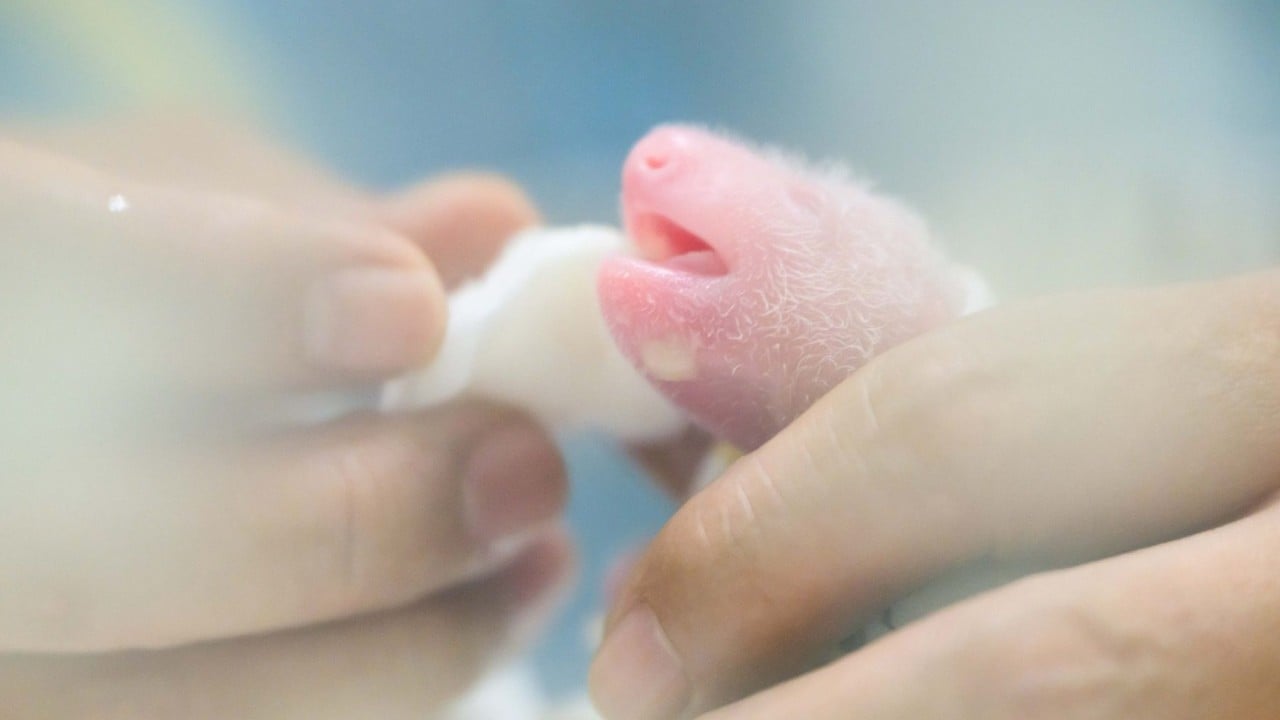Explainer | After Hong Kong’s Ying Ying bears twins, a look at the ins and outs of giant panda breeding
The birth of twins by Ying Ying, one of the two giant pandas in Ocean Park, has sparked cheers and interest across Hong Kong.
Without a hint of being pregnant to the public, Ying Ying delivered two cubs, a male and a female, on Thursday – a day shy of her 19th birthday – instantly becoming the oldest first-time giant panda mum in the world.
The Post looks at Ying Ying and her partner Le Le’s long journey to parenthood and delves into the delicate process of how pandas have babies.
How long did it take for Ying Ying and Le Le to become parents?
Female and male giant pandas become sexually mature at age five and seven years respectively.
The journey to parenthood for Ying Ying and Le Le took over 10 years, with multiple phantom pregnancies and miscarriages throughout the decade.
Arriving in Hong Kong as a gift in 2007, the panda couple began mating naturally between 2010 and 2011, with zoologists also attempting rounds of artificial insemination.
But none of the attempts was successful, including one in 2015, when Ying Ying and Le Le were flown to Wolong in Sichuan as part of a national mating programme in which pandas are encouraged to breed naturally or are artificially inseminated.
Ying Ying was impregnated as part of the programme but the fetus was not ultimately viable.
She also experienced phantom pregnancies in every subsequent year until 2020. During such pregnancies in pandas, the bear experiences changes in behaviour and hormonal levels associated with actual pregnancies while not actually carrying a fetus.
In 2020, Ying Ying and Le Le again mated in their Ocean Park home, but this attempt also did not lead to pregnancy.

How were Ying Ying’s twins conceived?
The twins of Ying Ying and Le Le were conceived naturally.
Giant pandas normally carry one baby per pregnancy. The chance of a giant pandas conceiving twins is around 50 per cent and the successful delivery of Ying Ying’s cubs is considered very rare.
Is conceiving difficult for pandas?
Panda breeding poses a tough challenge for carers and experts, as the gentle bears are known for their short fertility windows. Detecting fetuses is also difficult.
Female pandas can only get pregnant two to three days within each year, with false pregnancies a common occurrence.
Pregnancies can be confirmed only about two weeks before birth with an ultrasound scan.
The time needed for panda mothers to carry their fetus can also vary widely – between 70 to 324 days – as the implantation of a fertilised egg is commonly delayed.
How do panda cubs grow?
Unlike their black-and-white-furred parents, baby pandas are born nearly hairless with pink skin, and blind.
According to the Smithsonian’s National Zoo in Washington DC, newborn pandas weigh between three to five ounces (80 to 100 grams) – about 1/900th of their mothers’ weight.
In a 2020 article, National Geographic said baby pandas will start growing white fur within 48 hours of birth, with dark fur appearing shortly after. Their coat is fully formed in about two weeks.
Cubs start to open their eyes at six weeks old and their ear canals open by their second month. Around three or four months old, their external genitalia begins to develop and they can finally defecate and urinate on their own.
The cubs will also start to crawl and grow teeth, with some able to munch on bamboo at six months old and stop nursing at around a year old.

Which other zoos have bred pandas?
Breeding pandas in captivity may be difficult, but is not uncommon in zoos all around the world.
Giant panda Mei Xiang, now 26, lived in the Smithsonian’s National Zoo for over two decades and bore four male cubs that survived to adulthood: Tai Shan in 2005, Bao Bao in 2013, Bei Bei in 2015 and Xiao Qi Ji – meaning “little miracle” – in 2020. She returned to China’s panda reserve in Sichuan last November.
At Tokyo’s Ueno Zoo, giant panda Shin Shin bore a female, Xiang Xiang, in 2017 and gave birth to twins Xiao Xiao and Lei Lei in 2021.
Singapore’s panda couple Kai Kai and Jia Jia produced a male, Le Le, in 2021. Unlike Hong Kong’s Le Le, the Singapore-born cub’s name is a reference to “Shi Le Po”, the ancient Chinese name for the city state.
Panda cubs born overseas are sent to the reserve in Sichuan when they about two to four years old.


